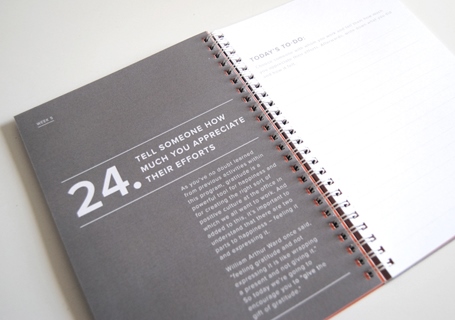No longer an urban myth, happiness could only be six weeks away. But happy weekends and happy holidays aside, can we really be happy at work? Ashleigh Sharman investigates.
The ‘happiness industry’ has come a long way in 2015, encouraging us to delve into this mood as much as possible from our personal to public lives, home to the office, and the relationship with have with ourselves and others. If you were anxious you might not be experiencing ‘happiness’ enough, this was indeed the year.
Happiness at work however has seemingly only been reserved for those who ‘love their job’ (apparently these happy folks don’t even call it work) yet a positive work environment has been shown to improve mental health and impact productivity — a win for employee and a win for employer.
 But if a team happiness project has you recoiling in fear at the thought of bonding activities, games and flow charts (hello fellow introverts!) The Happiness at Work Program might just have stumbled across an improved formula to encourage happier, more productive staff.
But if a team happiness project has you recoiling in fear at the thought of bonding activities, games and flow charts (hello fellow introverts!) The Happiness at Work Program might just have stumbled across an improved formula to encourage happier, more productive staff.
Introducing daily exercises for six weeks, that aim to become daily rituals, employees write in their own copy of the program to mindfully set a positive outlook with which to start their day.
“It’s personal,” says co-creator and etiquette expert Alexandra Blakemore.
“Your staff members are your biggest asset and they benefit as individuals, taking control of their own wellbeing and become happier.”
Differing from standard, and expected, staff training, The Happiness at Work program doesn’t require a facilitator but rather applies a one size fits all approach.
“It’s all about your staff personally, not their work skills,” Alexandra says.
“The final week’s task also encourages staff to develop an ongoing happiness plan for themselves and their team to further embed their newly learnt skills after the formal program is complete.”
Think happiness is overrated? It’s perhaps your businesses most desirable asset.
Studies have shown increased perception of happiness at work to improve retention of employees, lower unplanned absences, deliver better customer service and heighten the level at which staff feel valued.
 “When individuals experience appropriate positivity, they perform better, and when individuals perform better, employers and organisations achieve more,” adds Alexandra.
“When individuals experience appropriate positivity, they perform better, and when individuals perform better, employers and organisations achieve more,” adds Alexandra.
And while 2015 was perhaps the year of the awakening of personal mindfulness let’s hope 2016 is the year where the place we experience the majority of our day, the workplace, can too be a fountain for happiness and wellbeing.
We’re all in this together after all.




